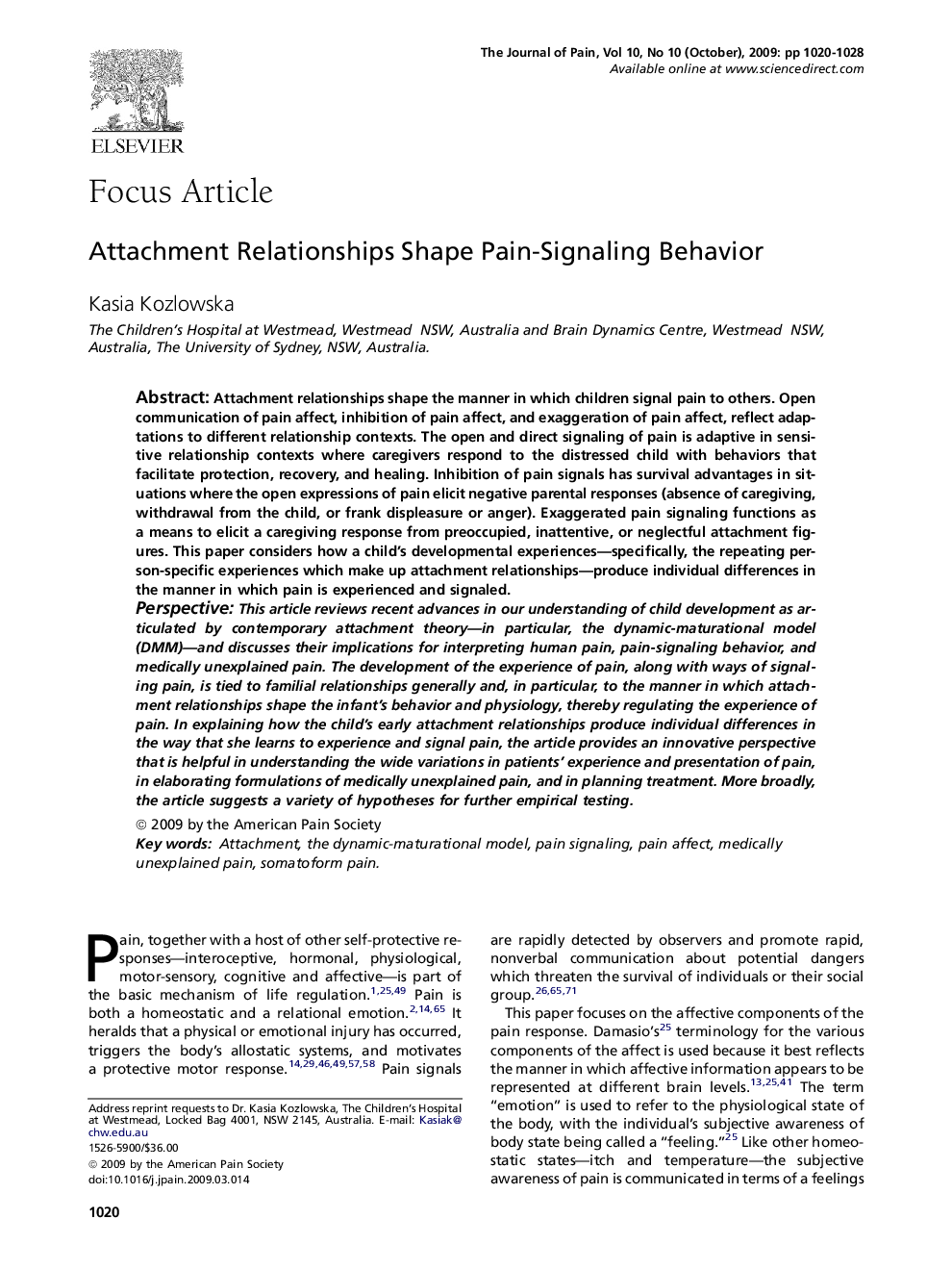| کد مقاله | کد نشریه | سال انتشار | مقاله انگلیسی | نسخه تمام متن |
|---|---|---|---|---|
| 2734748 | 1566809 | 2009 | 9 صفحه PDF | دانلود رایگان |

Attachment relationships shape the manner in which children signal pain to others. Open communication of pain affect, inhibition of pain affect, and exaggeration of pain affect, reflect adaptations to different relationship contexts. The open and direct signaling of pain is adaptive in sensitive relationship contexts where caregivers respond to the distressed child with behaviors that facilitate protection, recovery, and healing. Inhibition of pain signals has survival advantages in situations where the open expressions of pain elicit negative parental responses (absence of caregiving, withdrawal from the child, or frank displeasure or anger). Exaggerated pain signaling functions as a means to elicit a caregiving response from preoccupied, inattentive, or neglectful attachment figures. This paper considers how a child's developmental experiences—specifically, the repeating person-specific experiences which make up attachment relationships—produce individual differences in the manner in which pain is experienced and signaled.PerspectiveThis article reviews recent advances in our understanding of child development as articulated by contemporary attachment theory—in particular, the dynamic-maturational model (DMM)—and discusses their implications for interpreting human pain, pain-signaling behavior, and medically unexplained pain. The development of the experience of pain, along with ways of signaling pain, is tied to familial relationships generally and, in particular, to the manner in which attachment relationships shape the infant's behavior and physiology, thereby regulating the experience of pain. In explaining how the child's early attachment relationships produce individual differences in the way that she learns to experience and signal pain, the article provides an innovative perspective that is helpful in understanding the wide variations in patients' experience and presentation of pain, in elaborating formulations of medically unexplained pain, and in planning treatment. More broadly, the article suggests a variety of hypotheses for further empirical testing.
Journal: The Journal of Pain - Volume 10, Issue 10, October 2009, Pages 1020–1028